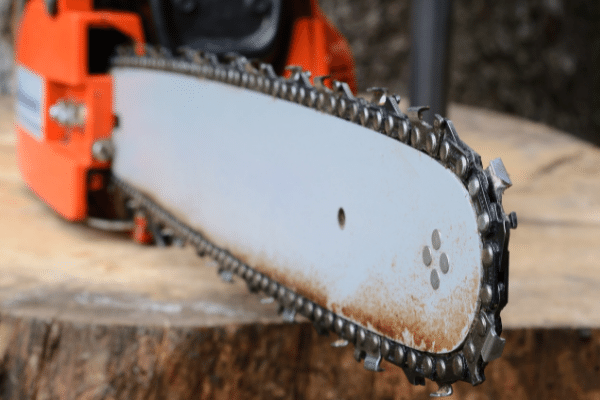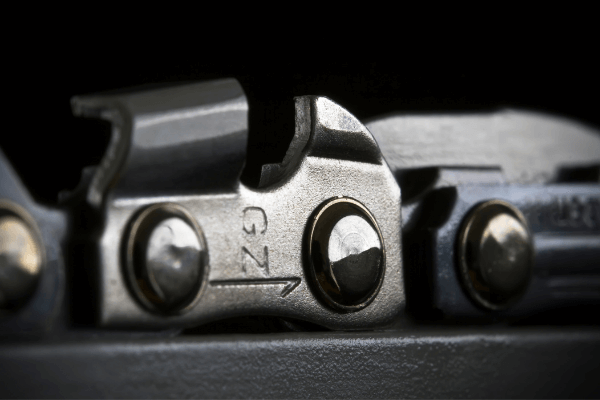- Home
- Chainsaw Maintenance
- Chainsaw Kickback
Chainsaw Kickback
This post may contain affiliate links so I earn a commission.
Whether you’ve been using a chainsaw for years or you’re new to it, chainsaw kickback is a topic no one should ignore.
The kickback from a chainsaw has the potential to be extremely dangerous, regardless of how much experience you have.
If you’re skilled with a saw, you may have already experienced the unpleanst sensation of a chain catching and creating backward momentum.
It’s a sensation that’s sure to take your breath away - and not in a good way.

Fortunately, there are steps you can take to prevent a chainsaw kickback from occurring - and to protect yourself from the risk of injury.
Here’s what you need to know.
What Is Kickback And Why Is This Deadly When Operating a Chainsaw?
Kickback from a chainsaw is a a rapid and unexpected upward movement of the guide bar of your saw when the chainsaw chain is still actively engaged in a cutting task.
It can occur both with gas and electric-powered saws and creates quite a perilous situation.
Not all kickbacks have a lot of driving force behind them.
They might not be overly violent and consist only of a slight backward nudge.
However, the most severe situations will cause your saw to be thrown back at you, leading to severe cuts or worse.
This can all happen in the blink of an eye, giving you very little time to prepare or react.
If a chain is pushed back and up by the drive of the chain as it continues to spin, it is naturally going to use the path back from where it already came.

More often than not, this direction is back toward the operator, leaving you face to face with a moving saw - and more often than not, the saw is going to be pointed at the most vulnerable part of your body (your head and your face).
The good news is that it is preventable with the right knowledge, helping you avoid any injury.
What Causes Kickback On A Chainsaw?
There are a couple of different situations that can cause a chainsaw kickback.
The top front portion of the chain along with the tip is known as the kickback zone.
If you touch the spinning chain to a cutting surface in this area, you could cause a kickback.
A pinched chain can also cause a kickback.
This often occurs when you are working with your saw on an uneven surface but it can also happen when you are bucking timber up into individual logs.
While the latter circumstance is tough to prevent - you’re just going to need to risk it at times - you can minimize your risk by ensuring a flat surface.
Double check that your wood is positioned as level as possible before you start to cut.
How Do You Stop A Chainsaw Kickback?
Chainsaw kickbacks happened to the best of us - even operators with years of experience.
Fortunately, there are a few steps you can take to minimize your risk.
Proper Chainsaw Maintenance
Proper maintenance is first on the list.
Keep your chainsaw maintained, performing all safety checks and preventative care as promptly as you can to ensure a safe working environment.
Things like cutters that were poorly or incorrectly sharpened as well as poor chain tension, dull chains, and improper or improperly installed parts can also cause a kickback.
Make sure you understand exactly how your saw functions and what kind of maintenance needs to be carried out before you start working with your saw.
Personal Protective Equipment
Wear your PPE (or personal protective equipment) any time you run a saw - even if it’s only going to be for a moment.
Wear a helmet along with ear protection, glasses, long sleeves, steel-toed boots, and chaps.

This will offer some level of protection from the chainsaw in the unfortunate event of an accident.
You still might get hurt, but the injuries likely won’t be quite as extensive.
Know How To Use Your Chain Brake
Almost all chainsaws have chain brakes.
When activated, chain brakes disengage the chain.
The chain brake is usually located in the front of your grip and can be activated when pushed against it with your wrist.
When your chainsaw kicks, it should automatically press against your wrist to engage.
Make sure your chain brake is functioning properly - and that your saw has the ability to idle without your chain being engaged.
If the chain moves even a little bit with the brake on, you need to adjust the carburetor settings on your saw or make sure your brake is installed and functioning properly.
Low Kickback Chains
There are some chains you can buy and install on your saw that reduce the likelihood of a kickback, too.
All saws with less than 66cc engine displacement are legally required to be sold equipped with low kickback chains.

These work by reducing the number of fibers that can grab on and kick back - often, this is done by adding more metal between individual cutters.
Low kickback chains offer benefits, but aren’t always the right choice.
For starters, they can be tough to sharpen.
They can also make it more challenging to bore, cut or fell a tree, so if you plan on engaging in these tasks with your saw, you may want to skip the low kickback chain.
Otherwise, for most firewood cutting, limbing, or bucking tasks, they work just fine.
Avoid Chainsaw Kickback As A New Chainsaw Operator
If you’re new to running a chainsaw, there’s a lot that you’ll need to learn.
What kind of saw should you buy?
How do you sharpen a chain?
What’s the best way to mix gas and oil?
However, one of the most important things you need to teach yourself is how to avoid chainsaw kickback.
Did you know that more than 90% of all chainsaw injuries can be attributed to operator error or poor judgment regarding personal safety?
Therefore, it is essential to understand the steps that should be taken to avoid a chainsaw kickback.
Follow these tips and you’ll stay safe and injury-free.

About the Author
Obsessed with firewood, Nick is behind over 350+ of Firewood For Life's articles, as well as countless reviews, guides and YouTube videos to help readers like you reduce heating costs and create the perfect fire.


